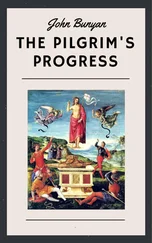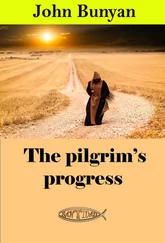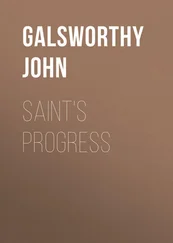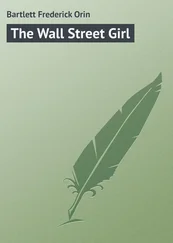John Bartlett - The Progress of Ethnology
Здесь есть возможность читать онлайн «John Bartlett - The Progress of Ethnology» — ознакомительный отрывок электронной книги совершенно бесплатно, а после прочтения отрывка купить полную версию. В некоторых случаях можно слушать аудио, скачать через торрент в формате fb2 и присутствует краткое содержание. ISBN: , Жанр: foreign_antique, foreign_prose, Историческая проза, на английском языке. Описание произведения, (предисловие) а так же отзывы посетителей доступны на портале библиотеки ЛибКат.
- Название:The Progress of Ethnology
- Автор:
- Жанр:
- Год:неизвестен
- ISBN:http://www.gutenberg.org/ebooks/35234
- Рейтинг книги:3 / 5. Голосов: 1
-
Избранное:Добавить в избранное
- Отзывы:
-
Ваша оценка:
- 60
- 1
- 2
- 3
- 4
- 5
The Progress of Ethnology: краткое содержание, описание и аннотация
Предлагаем к чтению аннотацию, описание, краткое содержание или предисловие (зависит от того, что написал сам автор книги «The Progress of Ethnology»). Если вы не нашли необходимую информацию о книге — напишите в комментариях, мы постараемся отыскать её.
The Progress of Ethnology — читать онлайн ознакомительный отрывок
Ниже представлен текст книги, разбитый по страницам. Система сохранения места последней прочитанной страницы, позволяет с удобством читать онлайн бесплатно книгу «The Progress of Ethnology», без необходимости каждый раз заново искать на чём Вы остановились. Поставьте закладку, и сможете в любой момент перейти на страницу, на которой закончили чтение.
Интервал:
Закладка:
Another class of antiquities has been discovered by these gentlemen, of which we only have the particulars in a letter. These consist of rocks sculptured with figures of men, of birds and animals. They are cut in outline, the lines being from one half to three quarters of an inch deep by about the same width. Only those on the sides of the rocks are visible. Those on the upper or horizontal faces are nearly obliterated. One represents an elk and is said to be very spirited.
What may result from the future researches of Dr. Davis and Mr. Squier, remains to be seen; but sufficient has been developed to show that a people, radically different from the existing race of Indians, once occupied the valley of the Mississippi, and built the singular monuments in which it abounds. These also show that they were to a certain extent advanced in the arts and civilization. In short that they closely resembled in the character of their structures, ornaments and implements of war and husbandry, the races of Central America; if they were not indeed their progenitors or an offshoot from them. Many facts strongly point to such a conclusion and farther observations carefully conducted, will probably enable us to settle the question beyond a doubt.
A detailed account of the researches of the gentlemen alluded to, accompanied by numerous engravings representing the implements, ornaments and sculptures, &c., discovered in their excavations; – surveys of the various earth works, forts and enclosures in the Scioto valley, will be given in the second volume of the Transactions of the American Ethnological Society, now preparing for publication. They are still actively engaged in their labors, and intend, should the facilities be extended them to carry on their operations, to examine every ancient relic to be found in Ohio and the adjacent parts, where these remains exist.
Among the explorations which have been carried on in the United States, none possess a greater interest than those of Dr. M.W. Dickeson, in the south western states, chiefly in Mississippi, though in some instances extending to Alabama, Louisiana, and Texas. Dr. Dickeson has laid open or examined one hundred and fifty mounds and tumuli, of various dimensions and collected a vast number of interesting relics, which illustrate the customs and arts of the ancient people who built them. The mounds vary from three to ninety feet in height, and from twelve to three hundred feet in diameter at the base. The Seltzer Town mound contains a superficies of eight acres on its summit. On digging into it vast quantities of human skeletons were found, chiefly with their heads flattened, and measuring generally six feet in length. Numerous specimens of pottery, including finely finished vases filled with pigments, ashes, ornaments, and beads, were also found.
The north side of this mound is supported with a wall two feet thick, of sun dried bricks, filled with grass, rushes and leaves. In order to ascertain whether this immense tumulus was artificial or not, Dr. Benbrook, sank a shaft forty two feet, and found it artificial or made ground to that depth. Immense quantities of bones, both of men and animals, among the latter the head of a huge bear, were thrown out. Other excavations were made in this tumulus with the same result, thus showing it to have been a vast mausoleum or cemetery of the ancient race.
The mounds are generally in systems varying from seven to ten, which Dr. Dickeson has divided into six classes as follows: out post , ramparts or walls , telegraphs or look outs , temples , cemeteries , and tent mounds . The first is seldom more than thirty feet at the base by ten feet high. Their shape varies, presenting sometimes a pyramid, at others a cone, or rhomboid. Walls surround the second class, which are from ten to fifteen feet in heighth, the same across the top, and from forty to fifty feet at the base.
The " Look out " mounds are seldom under sixty feet high. Of this class, Dr. Dickeson has examined upwards of ninety. They are generally on the summit of a hill, overlooking the bottom lands. Here they stand some three hundred feet above the bottom lands, commanding an extensive prospect, and in some instances one may see the peaks of several systems of mounds in the distance.
The " Temple mounds " are seldom more than twenty feet high, and stratified with ashes, loam, gravel, &c. They all have an earthen floor. Dr. Dickeson has, but in a single instant, found a skeleton in these mounds, and in this, he thinks the subject a Choctaw Indian recently placed there. It lay in a horizontal position, differing from the usual mode of burial, which is the sitting posture.
The " Cemeteries " are oval, and from six to ten feet high, filled with bones, lying east and west, and when incased in sarcophagi, the rows run in the same direction. In some instances Dr. Dickeson found the bones lying in heaps, promiscuously. These he believes to have been the canaille .
The " Tent or Structure mounds " are small, and a short distance below their surface, fragments of brick and cement are found in great quantities; sometimes skeletons and pottery. Never more than six skeletons are found together, and more care is shown in the burial of these than in the "cemetery mounds." In one instance an angular tumulus was seen by the Doctor, with the corners quite perfect, formed of large bricks, bearing the impression of an extended hand. 2 2 This figure of an extended hand is the most common of all the symbols of the aboriginal tribes of America. It is found on the ancient temples, and within the tombs of Yucatan. At the earliest period it was used by the Indians, in the United States, and at the present time, it is employed by the roving bands and large tribes from the Mississippi to the Rocky Mountains, and from Texas northward.
Many mounds and tumuli are advantageously situated on the tops of ridges, surrounded with walls. Some of the latter have crumbled away, while others remain strong and perpendicular. In many instances, the walls that surround these groups of mounds, form perfect squares and circles. Dr. Dickeson adds that, "if from the centre of one of these groups a circle were traced, it would strike the centre of each mound, both large and small." They contain numerous fragments of walls, images, pottery, ornaments, etc. etc.
The "Temples" are generally situated among the hills and ravines, with perpendicular escarpments, improved by artificial fortifications. The enclosures often embrace upwards of thirty acres. The great enclosure at "the Trinity" contains upwards of one hundred and fifty acres, and is partially faced with sundried brick. Upon the plantation of Mr. Chamberlain in Mississippi, the temple is flanked with several bastions , besides squares , parallels , half moons , and ravines with perpendicular escarpments for its defence. The ditches and small lakes are frequently chained for miles and filled with water, intended, the Doctor thinks, for outworks. In these, bricks are found both at the bottom and on the sides. Among the rubbish and vegetable deposits taken from them to put on the land, ornaments, and other relics are found.
Wells and reservoirs, completely walled with burnt clay, are found in Louisiana; near which are "systems," or groups of mounds so regular and strongly fortified, that they became the retreat of pirates and robbers who infested the rivers, greatly disturbing the early settlers, after the massacre of the Natchez Indians by the French. The Natchez built large dikes or ditches, and upon the counterscarp piled up huge ramparts, which they made almost impregnable, by having one side flanked by the slope of a hill, surrounded by precipices. They are sometimes situated on the level "bottoms." 3 3 "Bottoms" and "bottom lands," are terms applied to the flat lands adjoining rivers. In the State of New York they are called "flats" – as the "Mohawk flats."
In these cases one side invariably faces a creek or bayou, or is in its bend, making the creek serve as a formidable ditch, offering a serious impediment to an enemy's approach. The other two sides are protected by parallel walls or half moons, with gateways leading to the citadel. These walls have indications of having been faced with dry masonry. The east and west corners are generally flanked with a small oval mound.
Интервал:
Закладка:
Похожие книги на «The Progress of Ethnology»
Представляем Вашему вниманию похожие книги на «The Progress of Ethnology» списком для выбора. Мы отобрали схожую по названию и смыслу литературу в надежде предоставить читателям больше вариантов отыскать новые, интересные, ещё непрочитанные произведения.
Обсуждение, отзывы о книге «The Progress of Ethnology» и просто собственные мнения читателей. Оставьте ваши комментарии, напишите, что Вы думаете о произведении, его смысле или главных героях. Укажите что конкретно понравилось, а что нет, и почему Вы так считаете.












